Physical Address
304 North Cardinal St.
Dorchester Center, MA 02124
The eyeball is formed by three distinct layers. The outermost fibrous corneoscleral layer comprises the translucent cornea and the nontransparent sclera. The middle layer is the uvea, a vascular layer that also includes the choroid (choroidea) as well as the stroma of the ciliary body and the iris. The innermost coat is the retina that surrounds the vitreous chamber.
Cornea is composed of a corneal stroma, covered externally by the corneal epithelium and the underlying basement membrane (Bowman’s membrane). Corneal epithelium is continuous with the epithelium of the conjunctiva and it is composed of thin (approximately five cell layers thick), nonkeratinized stratified squamous epithelium without penetrating papillae. Internally, the stroma is lined with simple squamous epithelium that rests on the basement membrane adjacent to the stroma (Descemet’s membrane). The stroma of the cornea is avascular, and it is composed of several layers of regularly arranged collagen fibrils and fibroblasts. Cornea transitions to the sclera that is formed by irregular connective tissue containing vessels, and due to the random arrangement of the collagen fibrils, it is opaque. The inner part of the sclera, adjacent to the choroid, is composed of a delicate network of collagen and elastic fibers (lamina fusca). The outer part of the sclera that is facing the eyelid (palpebra) is covered outside with the conjunctiva, while the outer surface of the posterior part is coated with a loose connective tissue envelope.
Iris is the anterior part of the uvea, surrounding a central aperture, the pupil. Iris is composed of vascularized stroma formed by a network of fibroblast and melanocytes with deep spaces between the interconnecting bundles. At the pupillary margin, stroma contains circularly arranged smooth muscle cells forming the sphincter pupillae muscle that is under parasympathetic control. The stroma of the iris is covered posteriorly by two layers of pigmented epithelium; the anterior layer is composed of melanin-containing myoepithelial cells, forming the dilator pupillae muscle that is controlled by sympathetic nerves. This layer is lined with a layer of extremely pigmented epithelial cells (posterior pigmented epithelium) that rest on a basement membrane facing the lens while the basement membrane of the anterior layer faces the stroma of the iris. Melanin pigments in the cells of the posterior layer obscure the nucleus and the cell boundaries. Anteriorly, iris is lined with a discontinuous layer of melanocytes and fibroblasts.
Ciliary body is part of the uvea located between the iris and the posterior choroid that covers the inner surface of the sclera. As the continuation of the iris, the ciliary body is also composed of an inner epithelial layer and an outer vascular stroma that accommodates the ciliary muscle forming the bulk of the ciliary body. Ciliary muscle consists of smooth muscle cells that are organized circularly (inner zone), radially (middle zone) and longitudinally (outer zone); these fibers are responsible for reducing the tension on the lens, making it thicker (circular and longitudinal fibers) or flatten the lens (radial fibers). From the vascular layer of the ciliary body, ciliary processes are protruding centripetally. The movement of the ciliary muscles is transmitted to the lens by zonular fibers that originate from the basal lamina of the nonpigmented epithelial cells covering the ciliary processes, and they are attached to the margin of the lens.
The vascular stroma containing the ciliary muscles is covered inside by a double layer of pigmented epithelial cells; this layer is continuous with the anterior and posterior pigmented epithelium of the iris. An additional, nonpigmented layer of cuboidal epithelial cells covers the ciliary body inside; this layer is the continuation of the non-photosensitive portion of the retina, and it is responsible for the production of aqueous humor. This liquid is reabsorbed at the iridocorneal angle through the vascular spaces of Fontana that lead into the canal of Schlemm running circularly at the iridocorneal angle. Schlemm’s canal is a vessel covered by endothelium and opens into the aqueous veins of the sclera that drain the aqueous humor into the blood.
The posterior part of the uvea is the choroid that covers the internal surface of the sclera. The diameter of the vessels forming the bulk of choroid decreases centrifugally; the outermost lamina choriocapillaris contains mostly capillaries. The vascular layer of the choroid is covered by the vitreous Bruch’s membrane that is composed of the basement membrane formed by the lamina choriocapillaris, the basement membrane of the retinal pigment epithelium and a lamina of collagen and elastic fibers between.
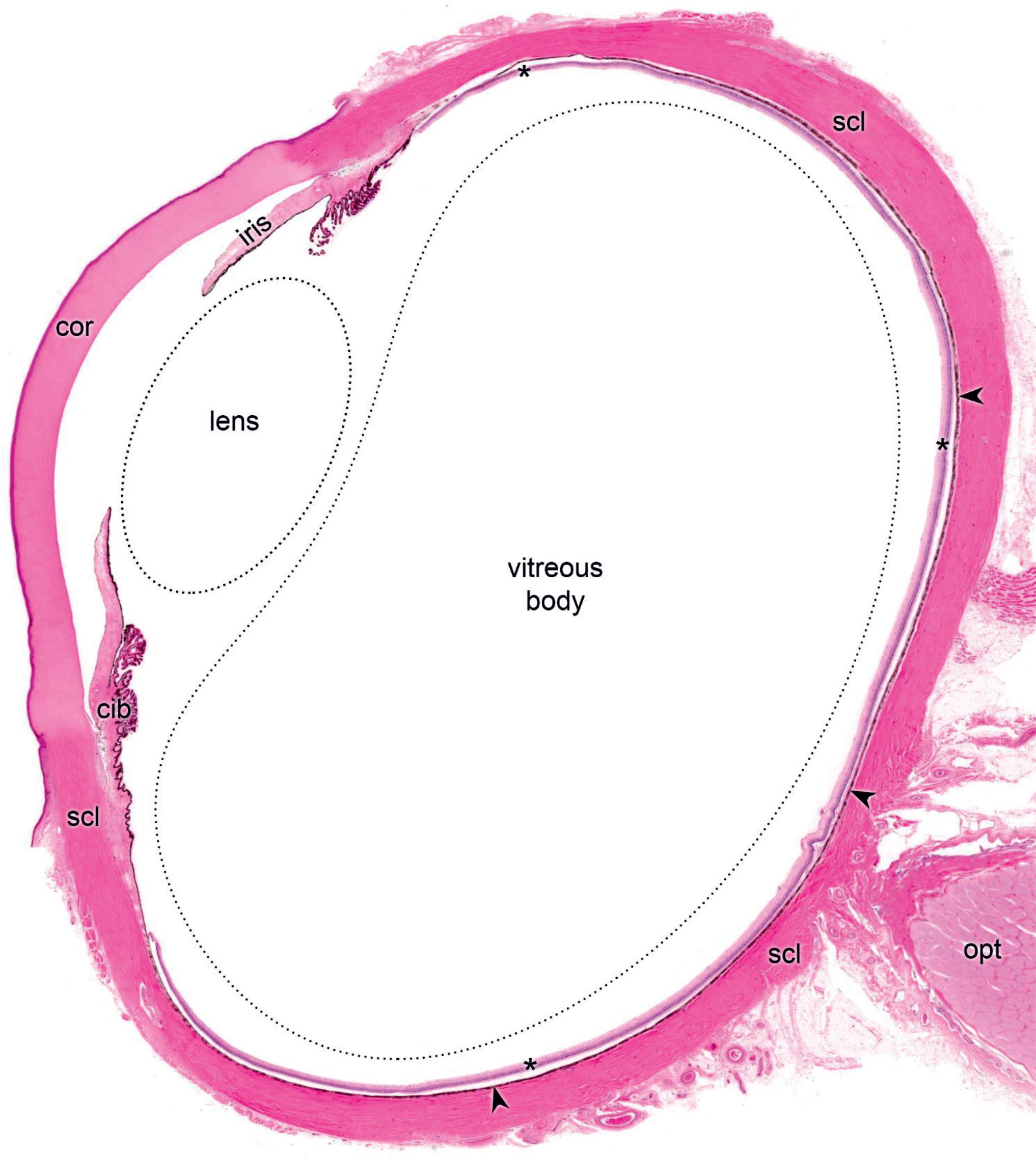
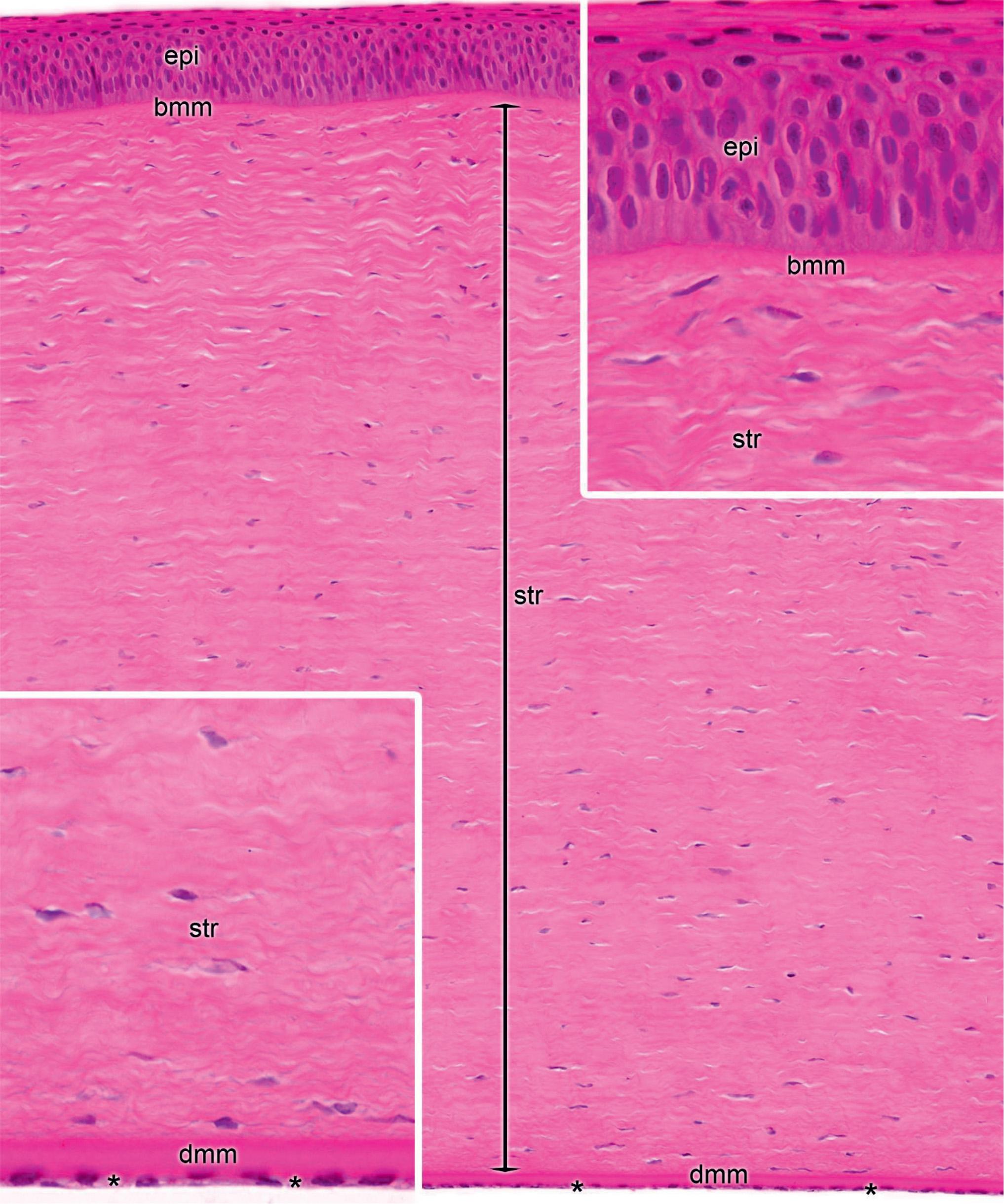
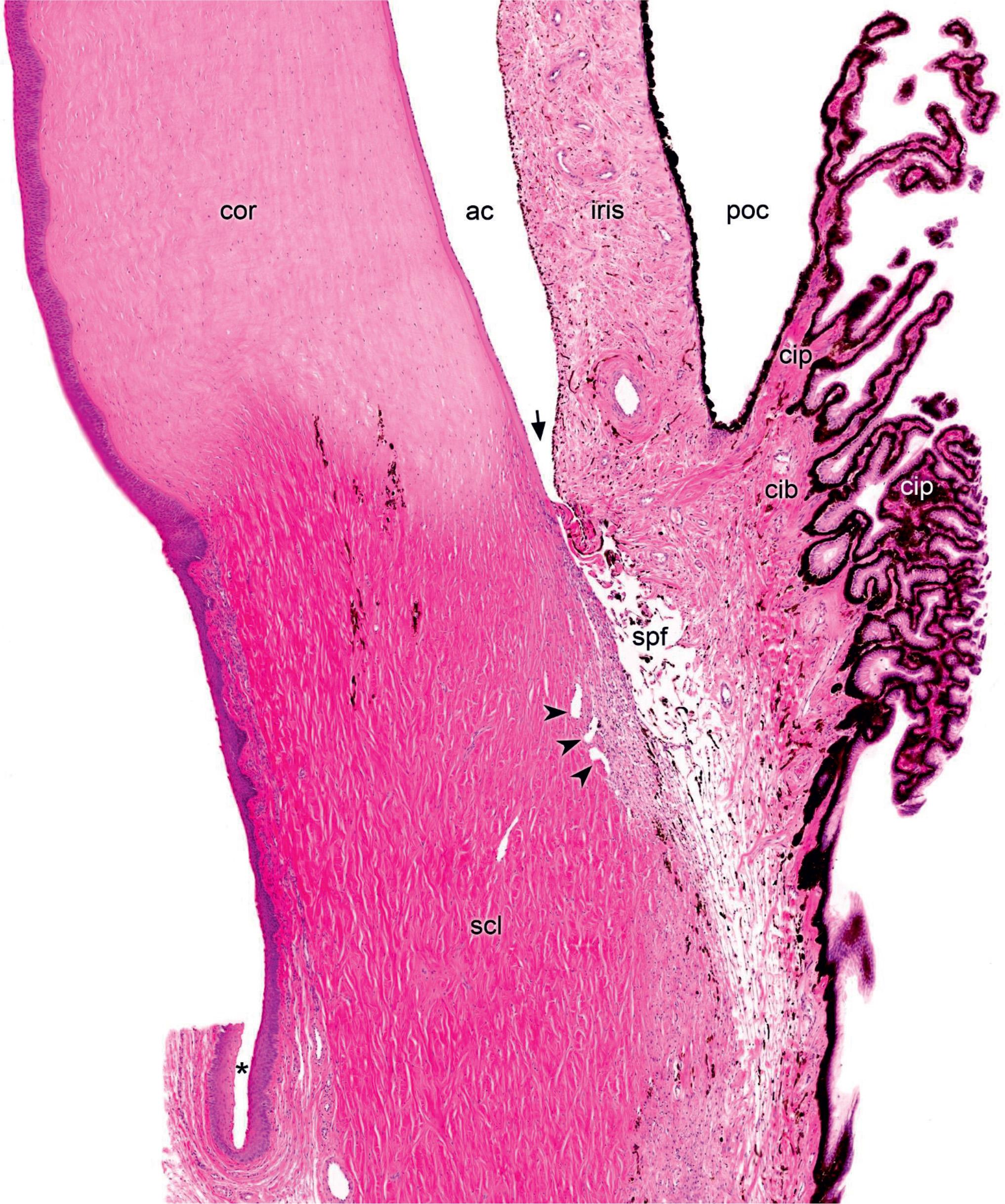
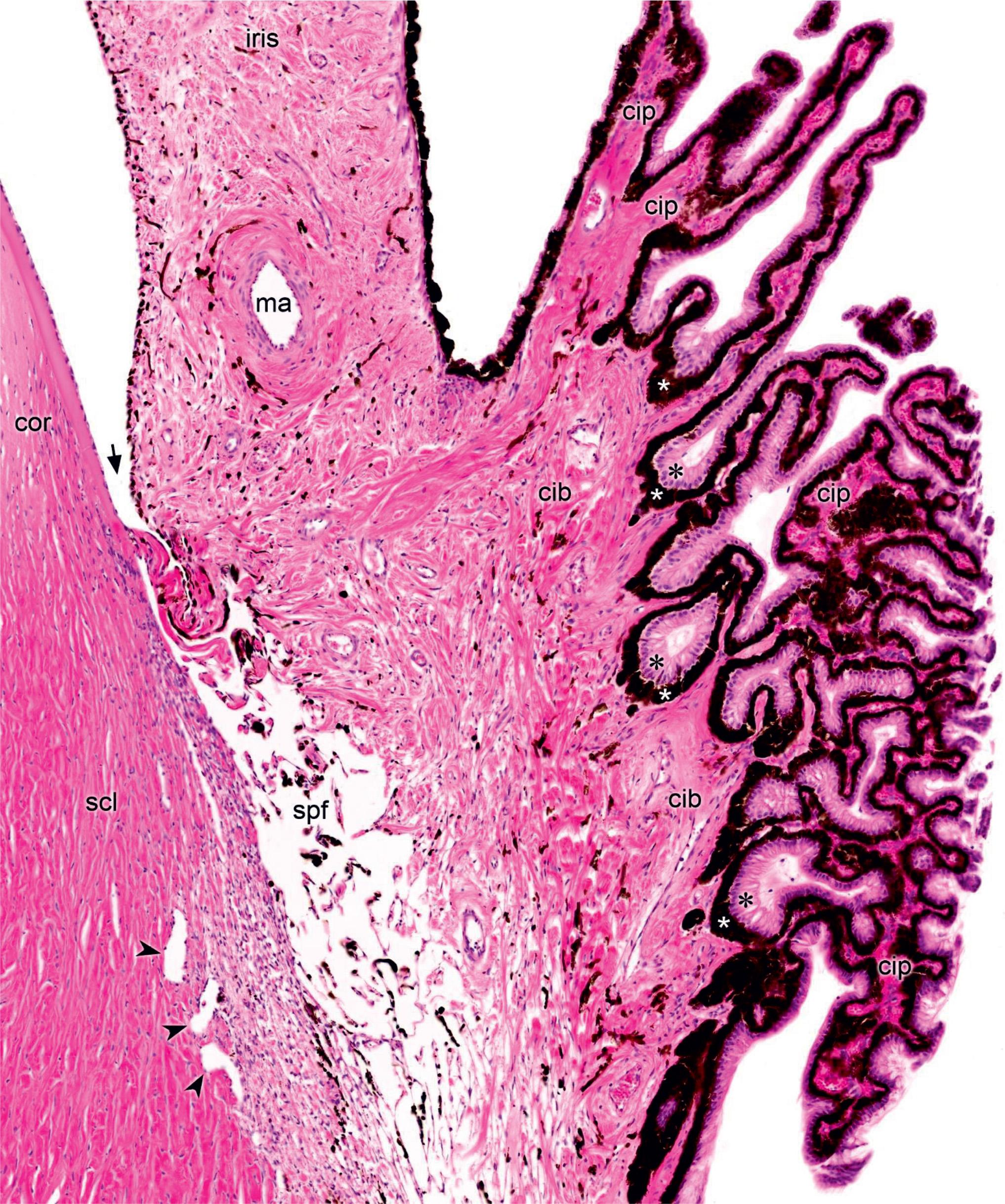
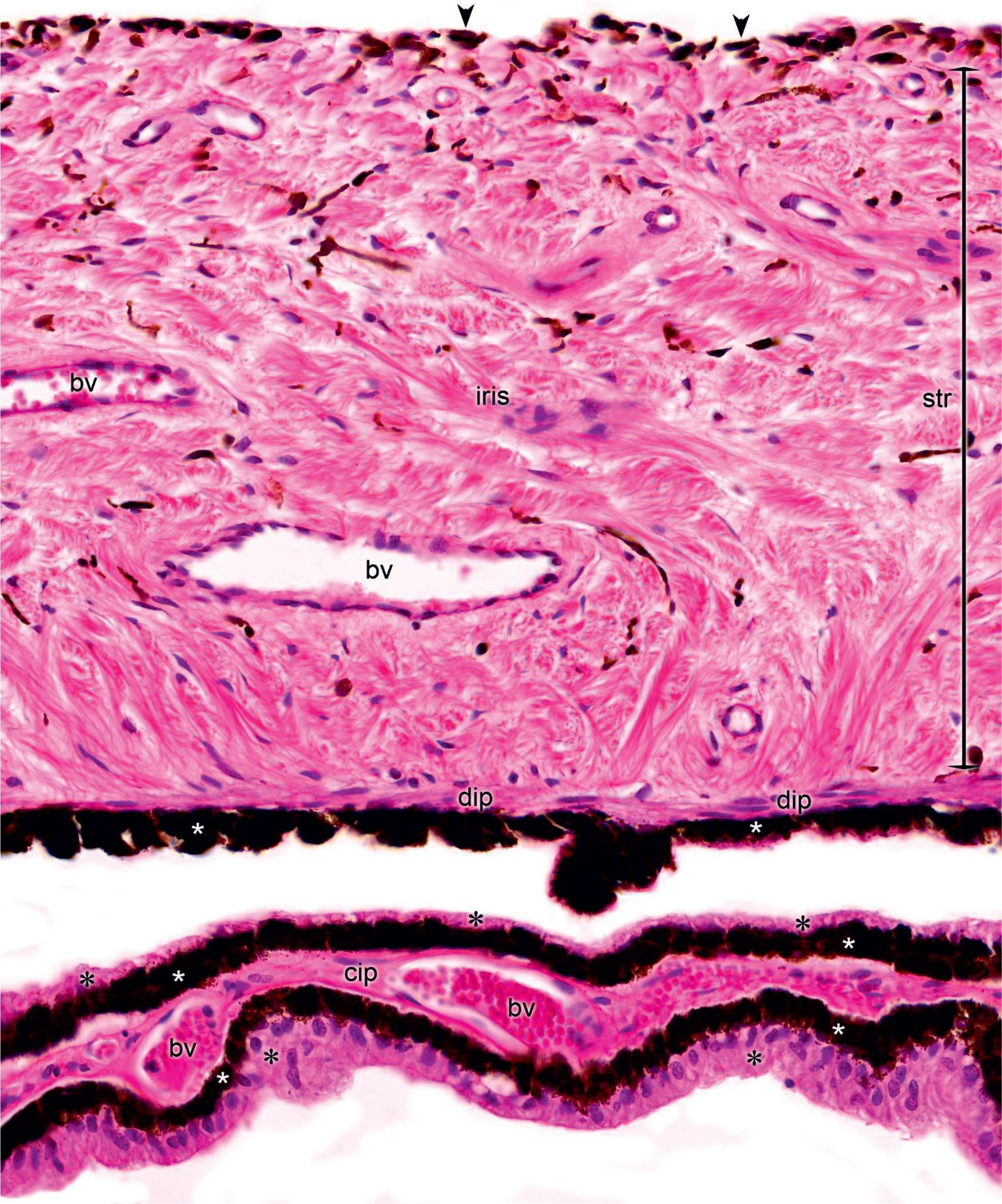
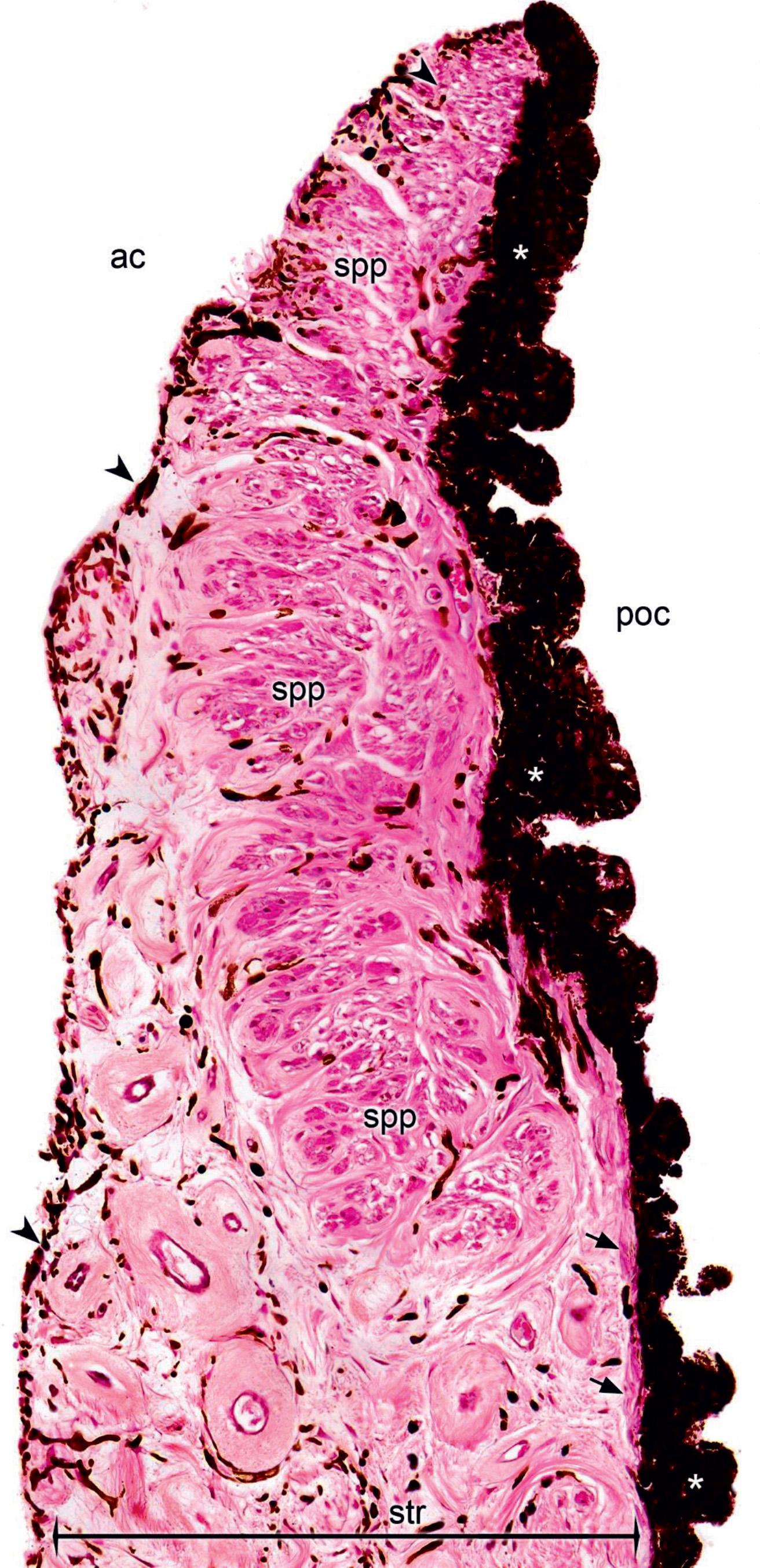
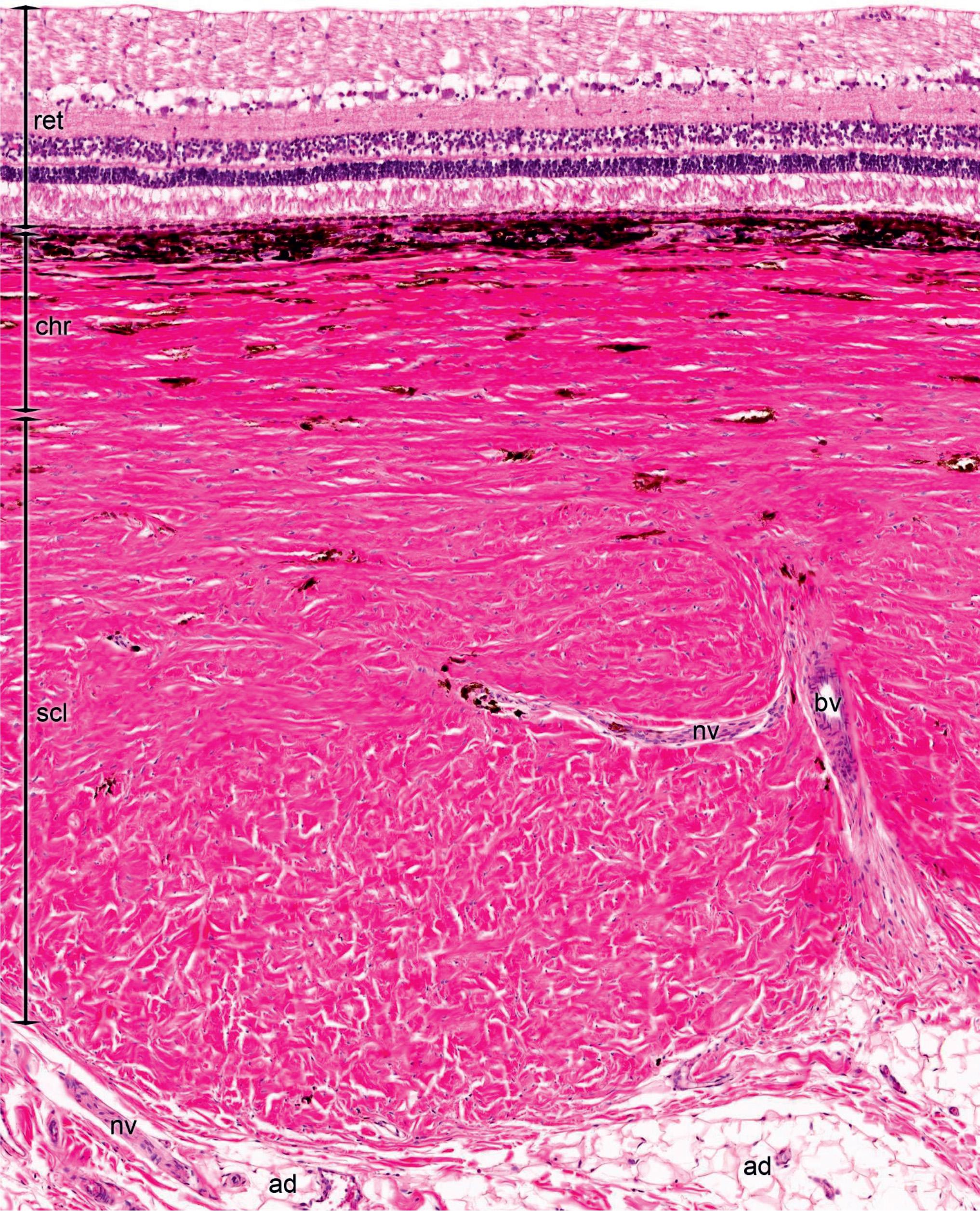
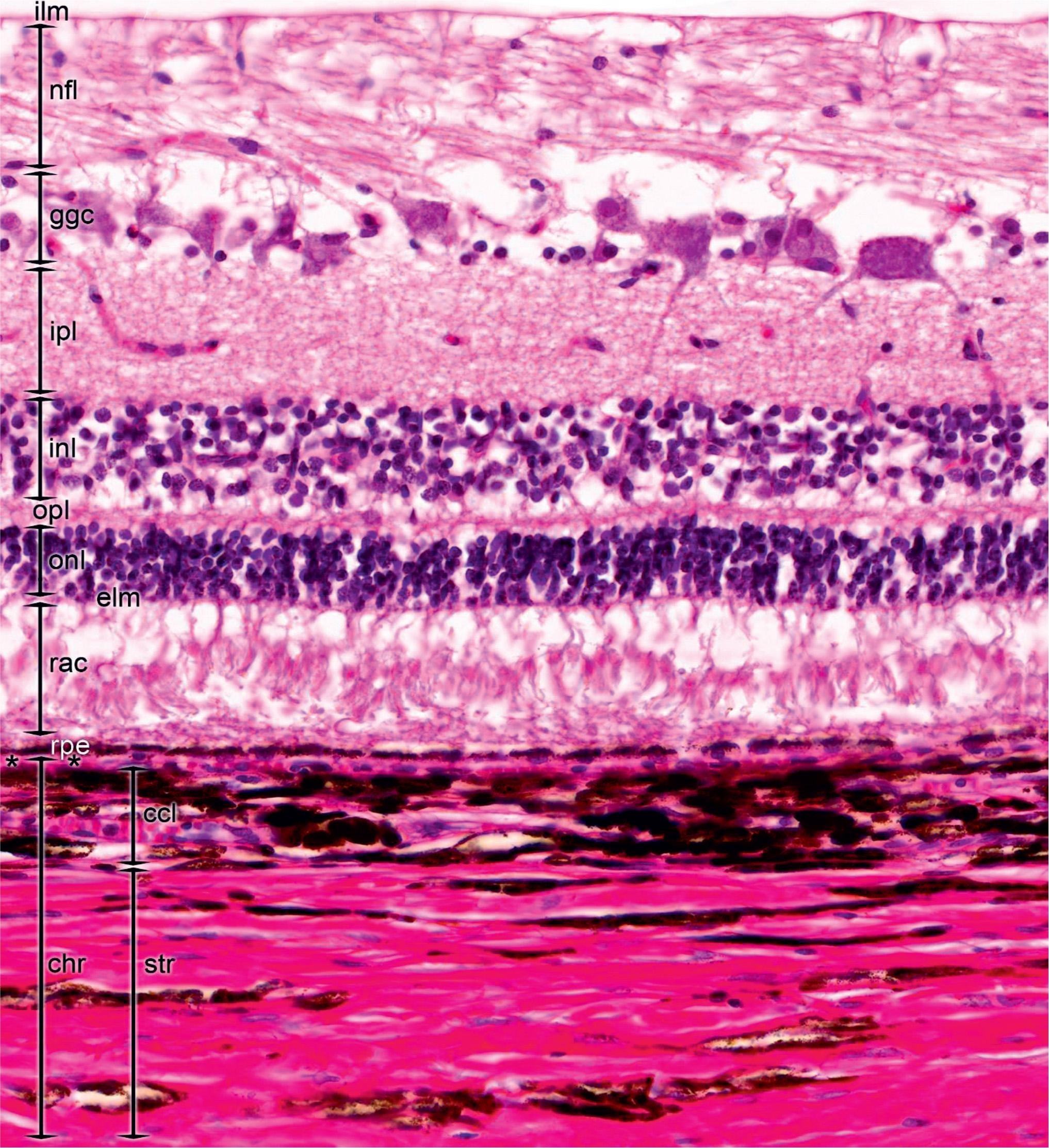
The innermost layer of the eye is the retina that is composed of the inner neural retina and an outer single layer of pigmented cuboidal cells that are attached to the choroid. There is a virtual space between these layers that can lead to detachment of the neural retina from the pigmented epithelium , the deepest layer of the retina. Internal to the pigmented epithelium, retina has nine additional layers. The outermost, the layer of rods and cones contains the inner and outer segments of the photoreceptor cells. The external limiting membrane marks the border of the Müller cells that are large, supporting glial cells extending to the retinal surface. The next layer, the outer nuclear layer contains the spherical nuclei of the rods and cones, while the projections of the photoreceptor cells along with the processes of the connecting bipolar and horizontal cells are located in the outer plexiform layer . The inner nuclear layer is tightly packed with spherical nuclei since it is composed of the perikarya of the bipolar horizontal and amacrine cells; this layer also contains the nuclei of the Müller cells. The inner plexiform layer contains the synapses between the bipolar cells and the processes of the amacrine and ganglion cells, while the cell bodies of the large ganglion cells are located in the ganglion cell layer . The processes of the ganglion cells that eventually form the optic nerve are collected in the layer of nerve fibers . Finally, the innermost layer, the inner limiting membrane is formed by the basement membrane of the Müller cells.
Lens is an avascular structure and it is anchored to the ciliary body by the zonular fibers that end in the capsule of the lens. The capsule is a thick basal lamina that is formed by the underlying cuboidal epithelial cells (lens epithelium) that are located only on the anterior side of the lens. These subcapsular epithelial cells form the lens fibers that make up the bulk of the lens extending from the epithelium to the capsule covering the posterior surface of the lens. Similar to the lens, the vitreous body is a transparent structure that fills the space between the lens and the retina (vitreous chamber). Vitreous body is composed of a gelatinous substance rich in glycosaminoglycans that is surrounded by a delicate vitreous membrane formed by collagen fibers. Occasional vitreous cells, the hyalocytes can be observed at the periphery of the vitreous body; they are believed to produce the gelatinous matrix.
Become a Clinical Tree membership for Full access and enjoy Unlimited articles
If you are a member. Log in here